
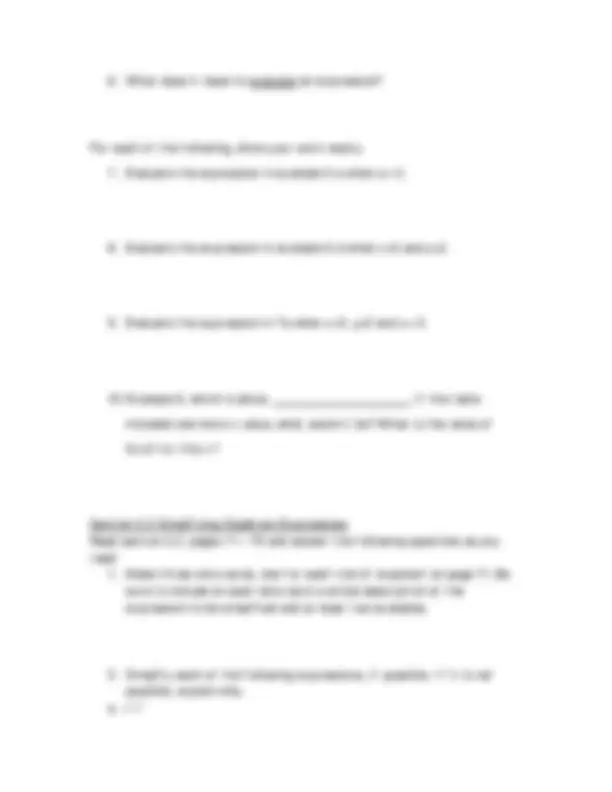
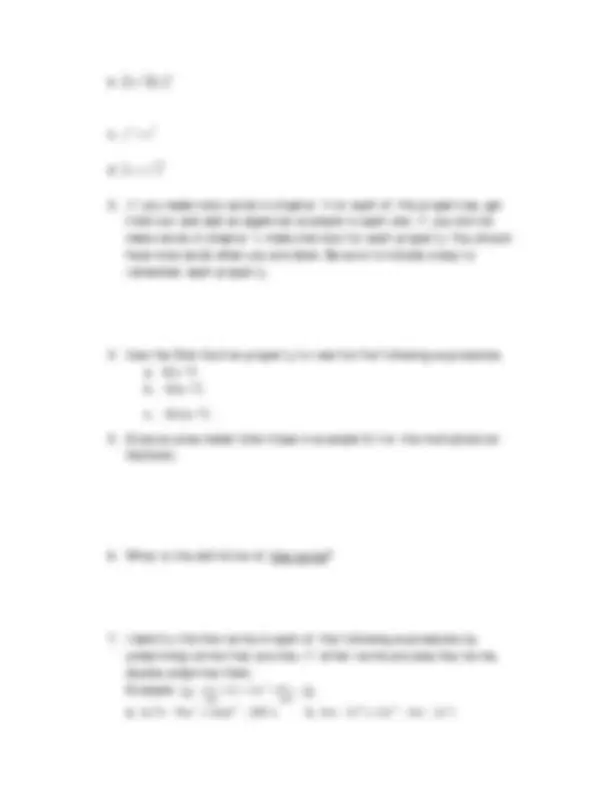
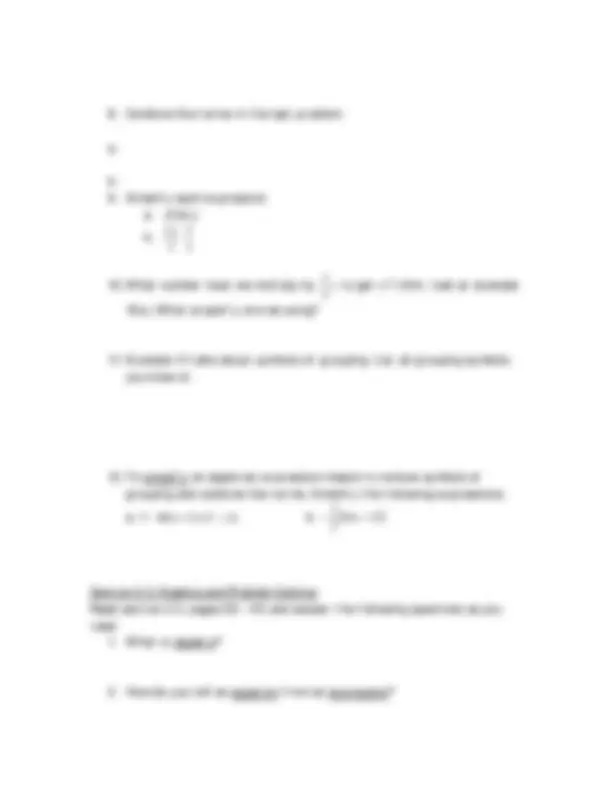
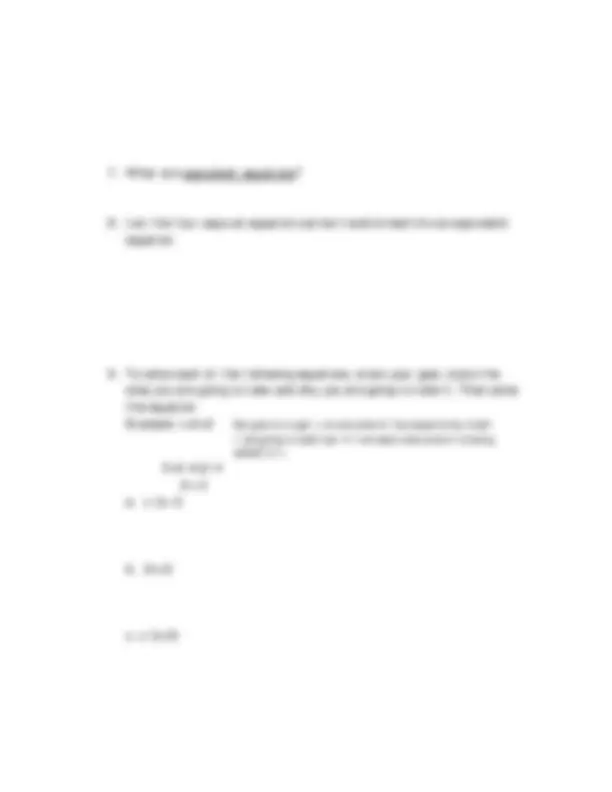
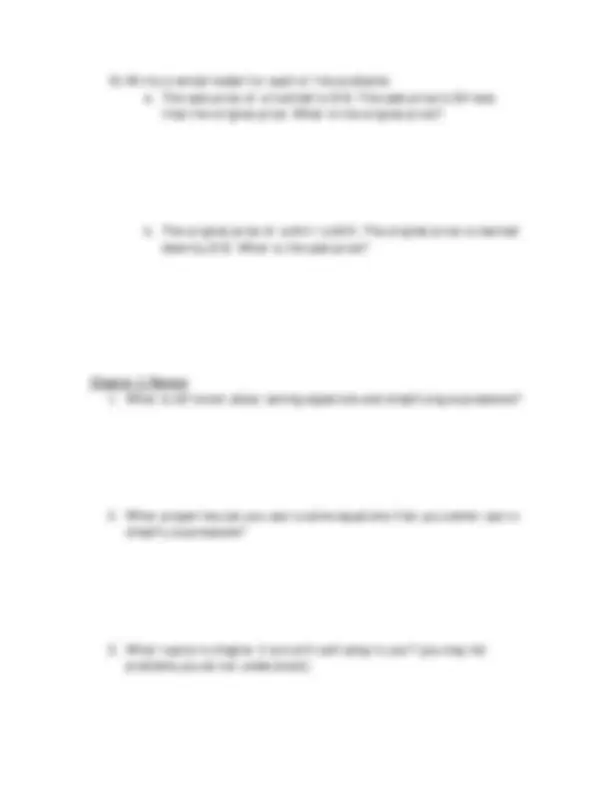



Study with the several resources on Docsity

Earn points by helping other students or get them with a premium plan


Prepare for your exams
Study with the several resources on Docsity

Earn points to download
Earn points by helping other students or get them with a premium plan
Community
Ask the community for help and clear up your study doubts
Discover the best universities in your country according to Docsity users
Free resources
Download our free guides on studying techniques, anxiety management strategies, and thesis advice from Docsity tutors
Material Type: Notes; Class: BASIC/INTERMED ALG COMBINED; Subject: Mathematics; University: Eastern Washington University; Term: Unknown 1989;
Typology: Study notes
1 / 10

This page cannot be seen from the preview
Don't miss anything!







Section 2.1 Writing and evaluating Algebraic Expressions Read section 2.1, pages 62 – 67 and answer the following questions as you read:
List the terms separated by commas. 6 y + 7
x
5 x^2 −^2
2 x^3 + 4 x − 3 x^2 + 5 4 x − 7 y − 9 7 ( x − 4 )+ 2
x
d. Write 3 x^4 as repeated multiplication.
b. ( 2 y^2 )( 3 y )^2
c. x^3 + x^5
d. ( x + y^2 )^3
a.
b.
2 y ⋅
(^2) to get x? (Hint: look at example
10a.) What property are we using?
− 3 x −
Section 2.3 Algebra and Problem Solving Read section 2.3, pages 85 – 95 and answer the following questions as you read:
Section 2.4 Introduction to Equations Read section 2.4, pages 99 - 104 and answer the following questions as you read:
c. x-7=
b. Determine whether –3 is a solution to -4(4-x)=
b. 2x=
c. x/3=